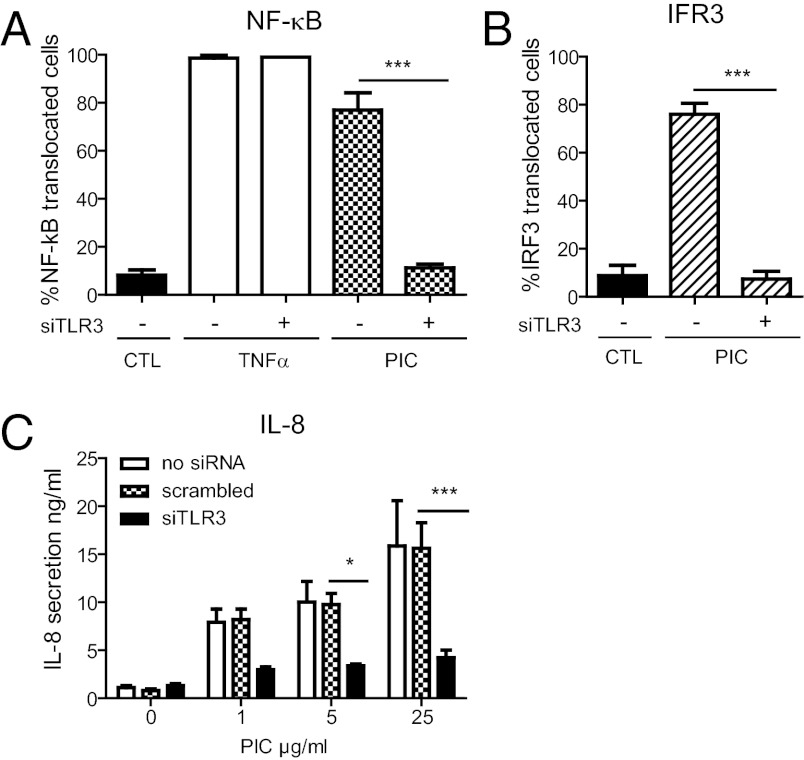Fig. 1.
poly(I:C) triggers a TLR3-specific response in RPE1 cells via NF-κB and IRF3 nuclear translocation. (A and B) Translocation of NF-κB (A) and IRF3 (B) into the nucleus. RPE1 cells transfected or not transfected with siRNA specific for TLR3 were incubated with poly(I:C) (PIC) for 75 min, TNFα for 30 min or unstimulated (CTL), stained for NF-κB (A) or IRF3 (B) and assessed by epifluorescence microscopy (Fig. S1 A and B). Histograms represent percentage of cells with NF-κB or IFR3 translocated into the nucleus calculated from three independent experiments. The method used to generate these histograms is explained in Fig. S1 C–E. (C) Cells transfected or not transfected with TLR3-specific siRNA or scrambled siRNA were incubated with poly(I:C) for 15 h, and IL-8 present in the supernatant was assessed by ELISA. Data presented are from three independent experiments. One-way ANOVA, Tukey HSD: *P < 0.05; **P < 0.01; ***P < 0.001.

